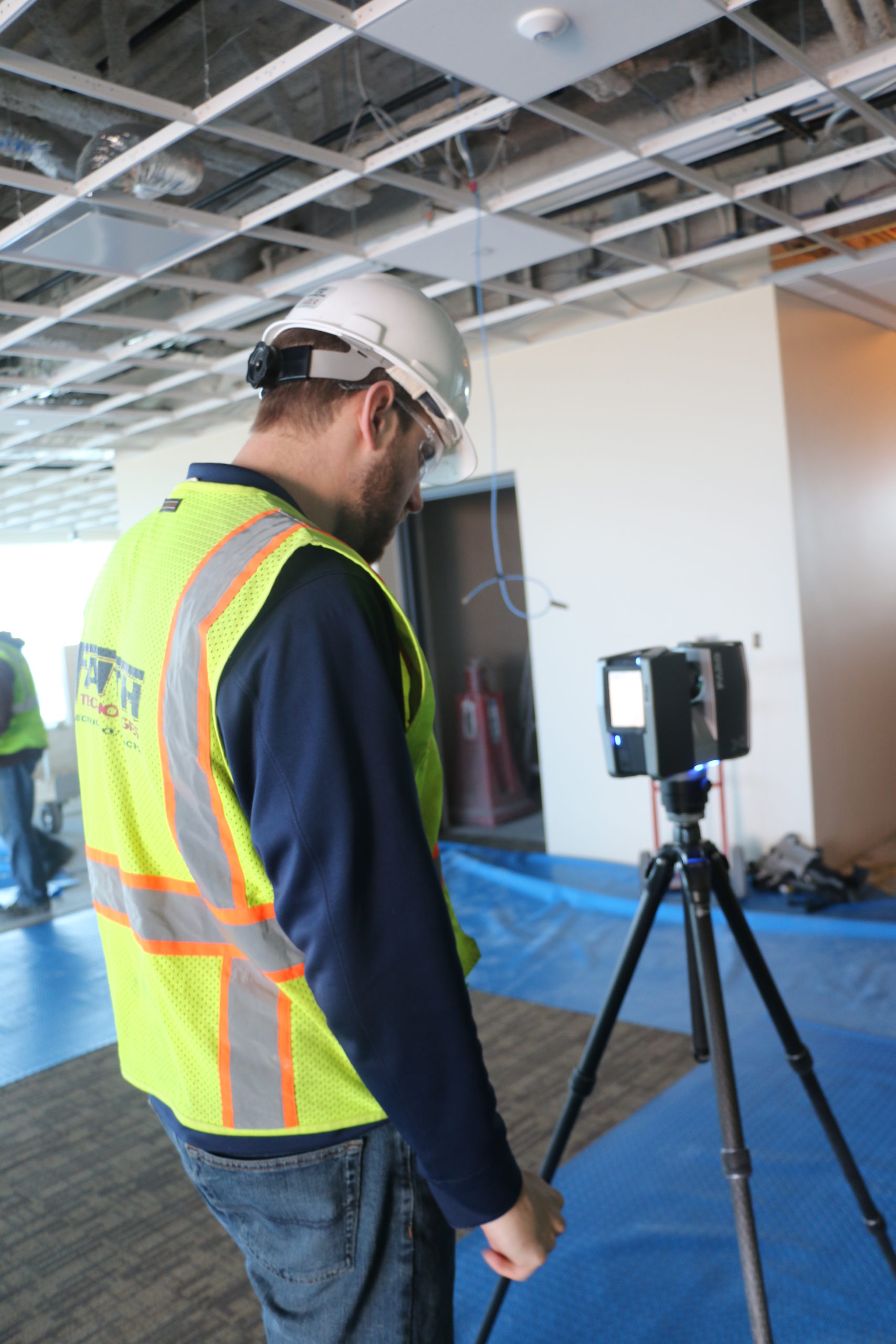01.16.2019
Safety, Productivity Benefits of 3D Scanning
 Faith Technologies has been performing 3D scanning services since 2015. In 2018, we were able to assist our customers and partners by scanning nearly two million square feet of facilities alone. This scanning was completed with a primary focus on two major areas: renovation site measurements (where all documentation is dimensionally perfect), and ongoing construction verification (the ability to move past prefabrication to manufacturing, which provides improvements to manpower and productivity).
Faith Technologies has been performing 3D scanning services since 2015. In 2018, we were able to assist our customers and partners by scanning nearly two million square feet of facilities alone. This scanning was completed with a primary focus on two major areas: renovation site measurements (where all documentation is dimensionally perfect), and ongoing construction verification (the ability to move past prefabrication to manufacturing, which provides improvements to manpower and productivity).
As with any tool, once the primary processes were created, we began to look for other areas 3D scanning could provide an impact. The first step in this was to establish a tracking process, time of scan, square footage, cubic footage, and number of scans. Evaluating the data led us to the first conclusion: that productivity gains could help to offset manpower shortages.
With the current industry labor shortage, it is imperative to be as efficient as possible. Compared to traditional methodologies, we’ve been able to increase efficiency by 92 percent. With the amount of data and area that can be collected by a scanner, this can easily be translated to hours saved or manpower not needed to run a tape measure and sketching drawings.
Faith Technologies has an uncompromised focus on keeping people safe. When that statement is the first core value of your organization, anything related to maintaining a safe environment for employees and all the people we work with is paramount.
When our safety initiative of “ladders last” was implemented, we had to find ways to collect site data without the use of ladders. While the increase in productivity was measurable, the effect on safety was a little tougher to measure, so we turned to statistics provided by OSHA. Falls from heights is on the list of OSHA’s “Fatal Four,” with 39 percent of all fatalities and more than 49,000 injuries annually related to falls. These statistics underscore the importance of performing work on the ground whenever possible.
In a traditional field documentation process with an average room height of 26 feet, we are immediately faced with decisions:
- Can I trust the drawings I have for dimensions?
- Can I use a single lift for height measurements?
- Can I perform all horizontal measurements from the ground?
- How many data points do I need to collect to build a baseline of trusted documented dimensions?
Each of these questions requires either collecting all the information at a great time expense, or trusting a data set of approximately 10 percent of the area to be captured, as well as the accuracy of tape measure calculations, especially when multiple measurements need to be recorded and added together.
In the end, more measurements mean more accurate data, which leads to a safer environment, which is always our number one goal.
If you enjoyed this blog article, please subscribe to stay up to date on the latest industry news from our experts at Faith Technologies.



